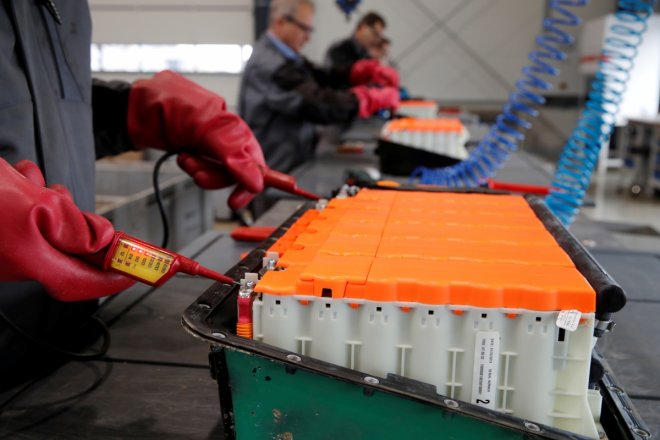
Scientists at the Fudan University, Shanghai, China have developed an affordable, cold-enduring lithium-ion battery for use in winters.
According to the journal Angewandte Chemie, the battery is made of hard-carbon anode and lithium-rich vanadium phosphate cathode. The hard carbon anode of the battery gives higher kinetics to the lithium ions even at a low temperature which keeps it functional during the extreme weather conditions.
Prof. Yonggang Wang, a Physical Chemistry Professor at the Department of Chemistry, Fudan University, Shanghai, China said, "the fuel cell keeps the high-energy density characteristics of conventional lithium-ion batteries and exhibits the supercapacitor-like high power and long cycle life." The battery could work at temperatures as low as minus 40 degrees Celsius.
The researcher stated, "this achievement arises from the inherent low-temperature ability of the vanadium phosphate cathode and the fast kinetics of the prelithiated hard-carbon anode."
The battery which is still under its development process would be a best suited for electric car engines.
Meanwhile, the researchers at the Empa, the Swiss Federal Laboratories for Materials Science and Technology and the University of Geneva (UNIGE) have now developed all solid batteries as an alternative to the lithium-ion batteries.
The all solid state batteries have potential to store more energy while maintaining high safety and reliability.
Hans Hagemann, Professor in the Physical Chemistry Department in the UNIGE's Faculty of Sciences said that the scientists are researching on a suitable solid non-toxic ionic conductor which could transfer sodium ions to the anode and cathode in the cell. The system also needs to be chemically and thermally stable.
The researchers have discovered closo-borane, a boron compound which allows free circulation of the sodium ions. The closo-borane has limited risk to catch fire while recharging. Leo Duchene, a researcher at Empa's Materials for Energy Conversion Laboratory said, "The difficulty was establishing close contact between the battery's three layers: the anode, consisting of solid metallic sodium; the cathode, a mixed sodium chromium oxide; and the electrolyte, the closo-borane."
The scientists tested the battery over 250 charge and discharge cycles and found 85% energy retaining capacity. However, the researchers said that the battery would be used for commercial purpose only after completing 1,200 charging-discharging cycles.









